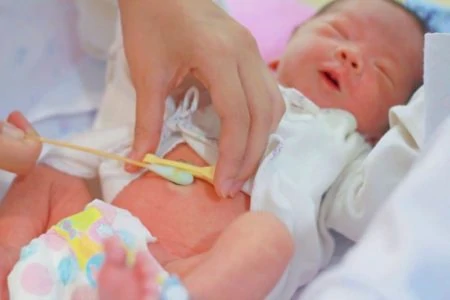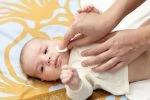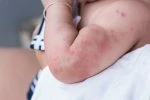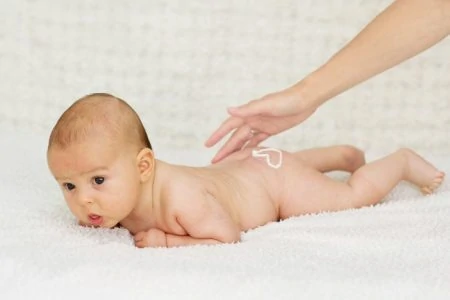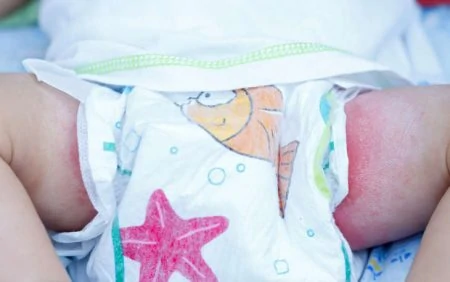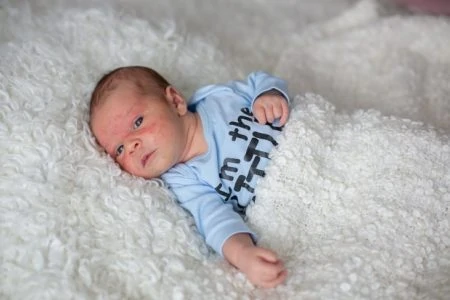Are you feeling lost, wondering how to clean your baby’s umbilical cord? Do you worry about it falling off too soon?
The umbilical cord can seem daunting at first — for all parents. I was nervous about my first baby’s umbilical cord. I didn’t want to bump or catch it on clothing, and I worried it would cause my little one pain.
However, my medical and parenting experience has since taught me otherwise. I now know there’s nothing to worry about.
In this article, we’ll set your mind at ease by discussing how to care for the umbilical cord and explaining what to do if something doesn’t seem right.
Key Takeaways
- Keep the umbilical cord clean with sponge baths and mild soap, avoid submerging the baby until the cord falls off.
- Give the umbilical stump air by not covering it with diapers and ensuring clothing isn’t too tight.
- Umbilical cord typically falls off in 10-14 days, but it can take up to 21 days.
- Contact your pediatrician if you notice symptoms of infection like persistent bleeding, red streaks, fever, sores, or pus.
The Umbilical Cord Explained
The umbilical cord acts as your baby’s lifeline while they’re growing inside your womb. It connects your baby to the placenta. The nutrients and oxygen needed for survival are pumped from the placenta to your baby via this amazing mechanism (1).
At birth, the cord is cut, severing the connection, and a little stump remains. This piece of cord at your baby’s belly button will typically fall off within the first two weeks.
How to Care for the Umbilical Cord
You’ll probably hear many opinions from all sides of your family regarding umbilical care. However, some of that advice may be outdated, much like other topics in baby land.
Many moms used to think that applying alcohol would make the cord fall off quicker. However, modern research has debunked that theory (2).
Furthermore, swabbing with alcohol can lead to irritation, increasing the time it takes to dry and fall off.
The consensus today is that you should mostly leave it alone. There are three main factors to keep in mind for promoting healing:
- Clean with care: Stick with sponge baths using mild soap and warm water until the cord is gone. Then you can submerge your baby. It isn’t necessary to deep clean the cord unless your baby’s stool or an infection is present.
- Give it some air: When putting the diaper on, don’t cover the stump. Some newborn diapers come with a notch cut out to accommodate this. If not, you can fold the front piece of the diaper down so that it sits below the cord. Ensure clothing isn’t too tight; a little breathing room is beneficial.
- Leave it be: Don’t ever pull on the stump; this could cause it to bleed (3). It will naturally fall off on its own, so a little patience could go a long way here.
When Will It Fall Off?
If you’re impatient, like me, your number one question might be, “when will this thing fall off?” The good news is that it doesn’t take long for it to dry up and fall off.
The umbilical cord will typically fall off in 10 to 14 days, but it can end up sticking around for up to 21 days (4). However, by about a month in, it should be a distant memory.
Don’t panic when it finally falls off, even if there is a trace amount of blood. A little scab might form at the site, but it should heal after a few days.
Symptoms To Be Concerned About
Most of the time, the umbilical cord will be no big deal; it’s just another part of parenting. But there are times when it may not be so straightforward. Just like any other part of your body, the umbilical cord can get infected.
Some symptoms are considered more severe than others and require care right away. If you notice any of these symptoms, we recommend making an appointment to see your pediatrician as soon as possible:
- Bleeding at the stump that won’t stop after 10 minutes of direct pressure.
- Red streaks on the skin, running away from the belly button area.
- A fever accompanying the cord falling off.
Other symptoms of infection are concerning but not considered urgent. You’ll still want to contact your doctor, though. These symptoms include:
- Sores, blisters, or pimples around the belly button area.
- Pus or mucus drainage from the location.
Sometimes, the moist, yellow jelly of the umbilical cord contrasts against the drying, darker stump. Look under the stump. If it has thick drainage and a foul odor, it’s concerning.
Editor's Note:
Caitlin Goodwin, MSN, RN, CNMUmbilical Granuloma
A somewhat common issue that can occur while the umbilical cord is healing or just after it has fallen off is an umbilical granuloma (5).
This looks like a little lump of red tissue at the umbilical cord site. It will be moist and may even ooze a little liquid. The skin around the belly button may also look irritated.
The granuloma itself isn’t too concerning because they rarely cause pain. The biggest problem is that it could become infected. If so, you may notice some of the symptoms listed above.
If you notice an umbilical granuloma on your baby, be assured it’s most likely not something you caused. Some babies develop them, even with proper care.
Your pediatrician may choose to simply observe the granuloma and see if it goes away on its own. If not, there are a few treatment options, the most common being a silver nitrate topical solution.
Even adults can develop these granulomas around their belly buttons. They can form around a navel piercing, for example. Thankfully, it’s easily treatable.
